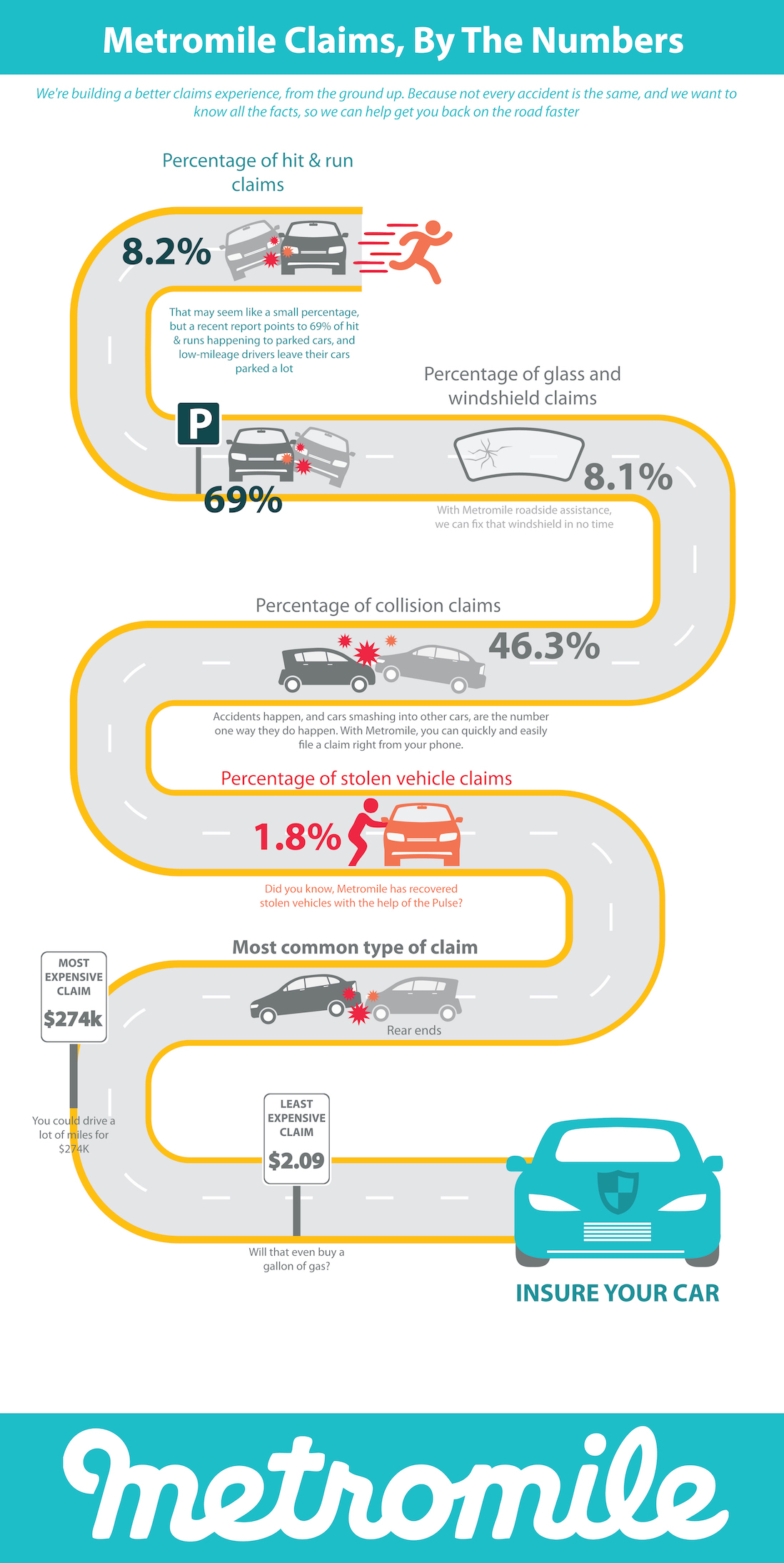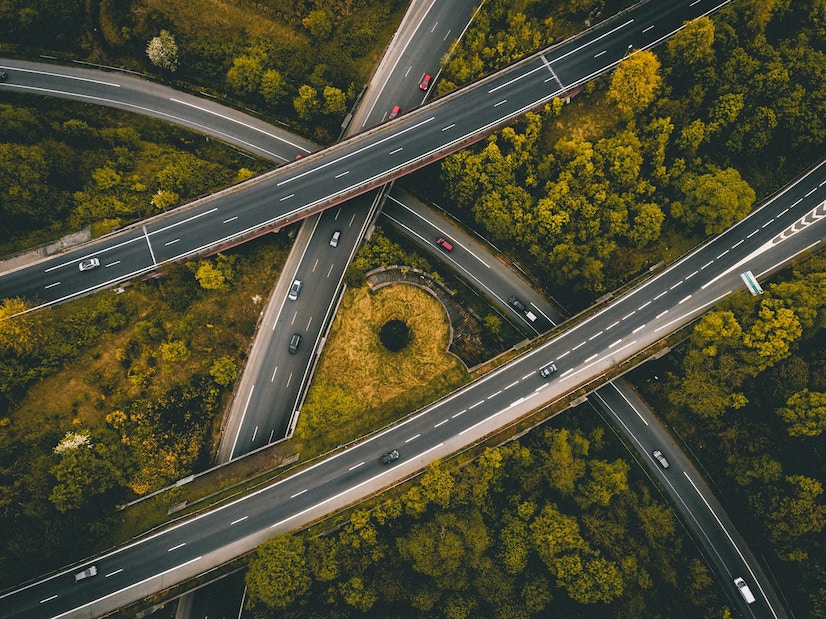Welcome to National Safety Month! Us Metromilers take safety pretty seriously. Did you know that in 2017 alone, more than 40,000 people died in motor vehicle crashes? Here at Metromile, we are determined to decrease that statistic and make our roads a safer place for everyone.

The three most prevalent causes of fatalities on the road are speeding, drunk/drowsy driving, and distracted driving. If we all pitch in and do our part, we can reduce the amount of vehicle-related deaths. Let’s do it, Metromilers!
Speeding
First up, let’s address the number one cause of vehicle-related fatalities: speeding. Speeding is a danger to everyone on the road – not just the driver. In 2016 alone, speeding killed 10,111 people, which is a horrifying statistic to wrap our heads around. We get it – we’re all busy and usually running late to something, but going faster than the posted speed limit will only get you to your destination mere seconds before going the speed limit will. The speed limit is there to protect all road users and is not just another annoying policy to keep in mind when driving.
The consequences of speeding are more than just breaking the law – they can be deadly. When you speed, you have a greater potential for losing control of your vehicle. This leads to increased stopping distance if there’s a hazard in the road, and increased degree of severity in the event of a crash.
As a driver on the road, there are things you can do to watch your own speeds and ensure that you are not a danger to yourself or others. Pay attention to posted speed limits and abide by them. Avoid driving aggressively and be courteous of other drivers and road users. If you anticipate traffic on the way to your destination, try to leave a little bit earlier to alleviate stress associated with running late. If you’re already going to be late, speeding is not going to change that fact! Arriving two minutes earlier won’t matter if you’re already arriving late, so try not to stress.
As a member of your community, you can do your part to bring an end to speeding. Participate in a speed management program – NHTSA delivers a Speed Management Program course to State and local jurisdictions. The course uses a multidisciplinary approach to address speeding problems in states and local communities.
Impaired Driving
The second cause of vehicle-related fatalities: impaired driving. This includes driving while drunk, on drugs, or drowsy. This type of driving is entirely irresponsible and entirely preventable. In the United States alone, 29 people die every day from alcohol-impaired driving-related incidents.
If you’ve been drinking or taking drugs (some prescription medications count, too), never get behind the wheel. Always have a sober friend or a designated driver drive you, or Uber/Lyft your way home. Also, did you know that driving drowsy is just as bad as driving drunk? Being awake for 18 hours straight has the same effect on your brain as a blood alcohol level of .05 (for reference, the legal blood alcohol limit is .08). If you’ve been awake for a full 24 hours, the effect doubles – it has the same effect on your brain as a .10 blood alcohol level. If you’re feeling drowsy, always pull over and rest before getting back on the road – don’t try to chug coffee and speed to your destination to get there faster because it won’t work; the only true remedy for drowsiness is sleep.
Communities should come together to stand against impaired driving. It is especially important to make teens and new drivers aware of the dangers of impaired driving. Many teens do not get enough sleep at the same time that their biological need for sleep increases, thereby increasing the risk of drowsy driving accidents – especially on longer trips. Each November, the National Sleep Foundation conducts Drowsy Driving Prevention Week in an effort to reduce the number of drowsy driving crashes. Let’s do our part to reduce impaired driving – both drunk and drowsy. If everyone makes an effort, it will have a larger-scale impact on our communities!
Distracted Driving
We’ve all heard the statistics: every day in the US, 9 people are killed in a texting and driving related accident. That’s not a meaningless number – every single digit is a human life that was ended as a direct result of distracted driving. Texting is the number one distraction impairing drivers on the road today! Traveling at 55 mph, you can cover the length of an entire football field by taking your eyes off the road for 5 seconds. Let that sink in for a moment.
When you’re behind the wheel, you have one job: to get to your destination safely and without harming anyone else. In order to reduce the amount of people killed in distracted-driving related accidents, we all have to do our part. Never, ever text and drive! If you absolutely must respond to that chirping notification, pull over and put the car in park before even looking at your phone. In addition to texting, distracted driving can also mean updating or scrolling through social media, changing your Spotify playlist, or talking on the phone. Have your passenger help you by acting as the car DJ or posting to social for you; let’s find any way to limit the amount of distracted driving accidents! Also, check out our post here for more tips on reducing distracted driving.
By taking action and working together, we can all make the roads a safer place for everyone. From reducing your speed, to never getting behind the wheel impaired, to making it a personal policy that you never text and drive, every little bit counts. Let’s all do our part to drive safely – after all, we’re in this together! Don’t forget that you can always grab a free quote from Metromile to find out how much you could be saving on your car insurance. Be safe out there and see you on the roads!
Julianne Cronin is a Bay Area freelance writer, content creator, and founder/editor of the women’s lifestyle site, The Wink.









